Bedbug vs. cockroach – entomologists reveal 6 differences, and why it matters for effective, quick, long-lasting pest control prowess
Everything you need to know about these common pesky pests


You've probably heard of both, but what are the crucial differences between a bedbug vs. cockroach? Though the smallest roach is the same size as an average bed bug, knowing the difference between the two is essential when tackling an infestation.
As our pest pros say, both are hardy, resilient, and adaptable pests who thrive in warm homes filled with food sources. But, importantly, their differences go beyond their appearance and size. There are some key discrepancies in their nesting, behaviors, attractants, and how you should approach dealing with an infestation.
Here, our entomologists share their advice on these common indoor pests, including what they look like, where you'll find them, and what to do for long-lasting success in eradicating them.
Bedbug vs. cockroach: The differences
1. Appearance

Cockroaches, pictured, are typically much larger than bed bugs.
The main difference, when it comes to appearances, between a cockroach and a bedbug is a disparity in size. Cockroaches are much larger by comparison, with long, distinctive antennae, while bedbugs are much smaller.
Jim McHale, entomologist and president at JP McHale Pest Management, explains, 'Bed bugs are small reddish-brown insects,' though this can vary with age, species and feeding.
'They are about the size of an apple seed, and usually remain undetected to sleeping humans as they only come out of hiding at night when there is little activity in the house.'
This can make it difficult to get rid of bed bugs before a small pest problem has turned into a larger infestation. Eradicating bed bug infestations can often be more tricky, and expensive.
In contrast, cockroaches have flat, oval bodies, explains Emma Grace Crumbley, entomologist at Mosquito Joe.
'Even as nymphs, roach bodies are distinctly oval-shaped,' she says. 'All roaches have long antennae, spiny legs, and a pair of wings folded over their body. Roaches can vary in color and size depending on age and species, but most cockroaches are brown, tan, or red.
'The smallest roaches readers will likely see in or around their homes would measure around ¼ inch. Cockroaches range in size, with the largest common roach pests, like the American cockroach, measuring up to 2 inches long.'
Another difference is that bed bugs cannot fly, and do not have wings. 'The largest bed bug gets is around ¼ inch, the same size as the smallest roach,' adds Emma.
2. Nesting

Bed bugs, pictured, favor warmth and dryness, whereas cockroaches prefer dampness and dark.
As with cockroaches vs waterbugs, where you find the pest will give you a good hint of which it is.
As Jim explains, cockroaches are pests which prefer hidden harborage, but don't build traditional nests, instead congregating in moist and damp areas, like under your kitchen sink. Keeping your home clean will help, but me mindful roaches will still enter clean homes.
'Cockroaches are attracted to damp and dark environments, so the rainy spring season is ideal for them to venture indoors,' he says.
As Emma adds, roaches do not depend on social hierarchy like bees or ants do, but, even so, they're likely to be found grouped together.
'This is because cockroaches are thigmotactic, meaning they like to have stimuli on all sides of their body,' Emma explains. 'When roaches are resting or hiding, they seek tight, hard-to-reach areas.
'In dense infestations, roaches may wander by themselves throughout the home. Seeing a random, brave roach venturing out can indicate that the close-quarters roaches prefer are becoming too crowded.'
Like cockroaches, bed bugs are thigmotactic, and will reside in tight areas near to human hosts. But, unlike cockroaches, they're typically found in mattresses, box springs, bed frames, tiny cracks in couches and other upholstered furniture, inside the space of wicker furniture, curtains, edges of carpets, corners inside dressers, and cracks in wallpaper, particularly near the bed.
'Bed bugs hide in more than just bed frames and mattresses,' warns Jim, which is a common pest control myth. 'Check small cracks, crevices, skirting boards, and bedside cabinets. Inspect seams, covers, and zips of sofas and chairs, as well as where furniture meets walls, door seals, and ornaments.
'Look for dark or black stains, possibly from bed bug excrement, around the mattress and nearby areas. Be alert for a sweet, sickly odor, it may signal a significant bed bug infestation.'
'Bed bugs have an average lifespan of four to six months under normal living conditions, and can live up to twelve months or longer in an empty house before completely dying off.'
In contrast, cockroaches live between six to twelve months, and can survive without food for up to a month. For that reason, getting rid of cockroaches can be particularly difficult.
3. Behavior and feeding habits

While cockroaches are omnivores, which is why you might find them scavenging in your pantry, bed bugs feed exclusively on human blood.
As Emma explains, when considering the behavioral similarities differences between a bedbug vs. cockroach, both are nocturnal. But, she adds, 'Bed bugs are primarily nocturnal unless their hiding spots get disturbed, meaning most feedings happen at night when people are sleeping.'
For this reason, it's recommended to spring clean your bed and use a mattress protector that's best for bed bugs. The bestselling SafeRest Mattress Protector available at Amazon is our top pick.
Roaches and bedbugs also differ in terms of their diet. 'Cockroaches are omnivorous and scavengers,' continues Emma. 'They prefer to feed on food debris and organic material that is easily available, and they do not hunt prey like other insects.
'Some roaches can flutter for brief periods, some are strong flyers, and some have fully formed wings but are unable to use them.
'Unlike roaches, bed bugs are hemophages and have piercing, sucking mouthparts designed for drawing up blood. Bed bugs may feed for 10 minutes to ensure they get the blood they need for nutrients and egg production.
'Both male and female bed bugs are blood-feeding. Bed bugs have liquid-only diets, so their droppings are not solid like roach waste. Instead, smear marks and small puddles can be found along bedding, indicating a bed bug problem even if the pests themselves are not present or visible.'
4. Breeding
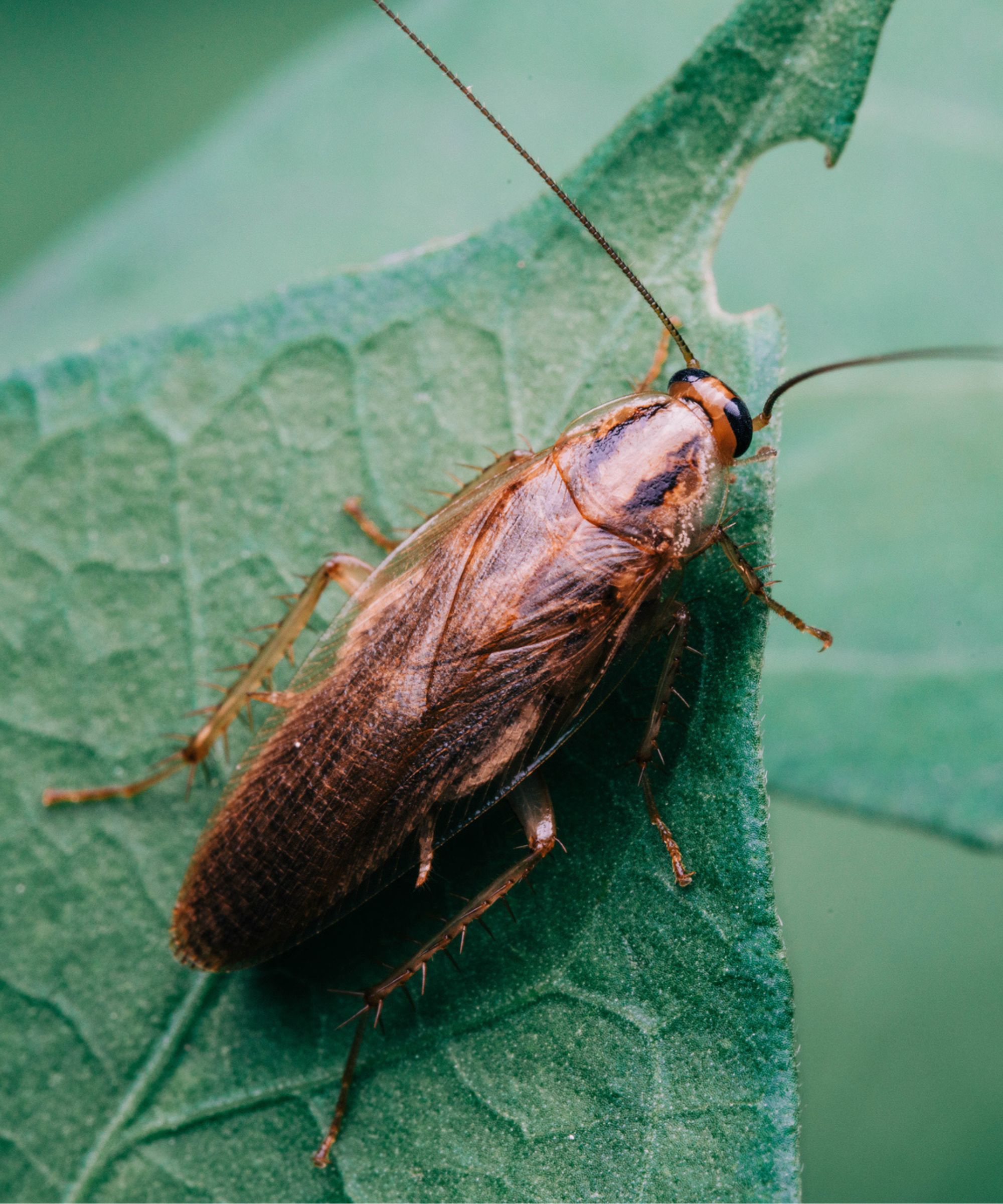
Cockroaches, pictured, and bed bugs both lay eggs.
Both cockroaches and bed bugs lay eggs.
'Female bed bugs lay tiny eggs that hatch into nymphs within 10 days of being laid,' says Emma. 'These eggs are usually laid in tight areas near host feeding sites, like the ridges of mattresses or the corners of beds. One female may lay up to 500 eggs in her lifetime. Bed bug eggs are too small to be seen with the naked eye.'
If you suspect an infestation, clean your mattress or steam clean your mattress as soon as possible, with the bestselling Dupray Neat Steam Cleaner available at Amazon. It's important to clean a mattress topper, too.
Emma continues, 'When a gravid female roach is ready to lay her eggs, she will produce an egg case called an ootheca. Most female roaches will carry this egg case with them until just before the nymphs are ready to hatch.
'Some roaches will drop their egg cases or adhere them to surfaces. The oothecas look like kidney beans or small, ribbed clutch purses. Depending on the species, an ootheca can have 10–40 roach nymphs inside.'
5. What attracts them

Cockroaches are typically drawn to dank and dark areas, like the cabinet under your sink, or any basement spaces.
Cockroaches and bedbugs also differ in terms of what attracts these pests to your home in the first place.
'Cockroaches are drawn to leaky faucets and dripping pipes,' says Jim. 'To prevent them from entering your home, make sure everything is clean and dry. Be sure to check all bathtubs, sinks, and washing areas for any leaks,' and take extra precaution when cleaning your bathroom or cleaning your kitchen sink, for example.
Use caulk, such as the GE Advanced Silicone Caulk available at Amazon to seal any cracks and gaps.
'Food left out, whether fresh or decaying, is also enticing to roaches,' adds Emma. 'Some roaches, like German roaches, also have a high affinity for warmth. Appliances from microwaves to WIFI routers can be invaded and infested by cockroaches.'
When it comes to bedbugs, doing your laundry is key, says Jim, as bed bugs are almost always an introduced pest, accidently brought into your home on infested items. 'Bedbugs are attracted to dirty clothes, so if you can’t do laundry before heading home from vacation, pack all your dirty clothes in a sealed plastic bag,' such as the HOMEST Travel Laundry Bag, available at Amazon.
'When you arrive home, do not unpack your suitcase in your bedroom,' adds Jim. 'Instead, do so in another room with a hard floor and no carpet so that you can spot any bed bugs.
'Inspect your suitcase with a flashlight to check for any bed bugs and vacuum it before putting it away,' using your best handheld vacuum. The BLACK+DECKER dustbuster furbuster Cordless Handheld Vacuum available at Amazon is our top pick.
'Wash everything,' adds Jim. 'Even clean clothes. It’s better to be safe and wash all the clothes you took on your vacation!'
And, in general, keeping on top of your laundry routine should negate the main cause of bedbugs.
6. Dangers and how to stay safe
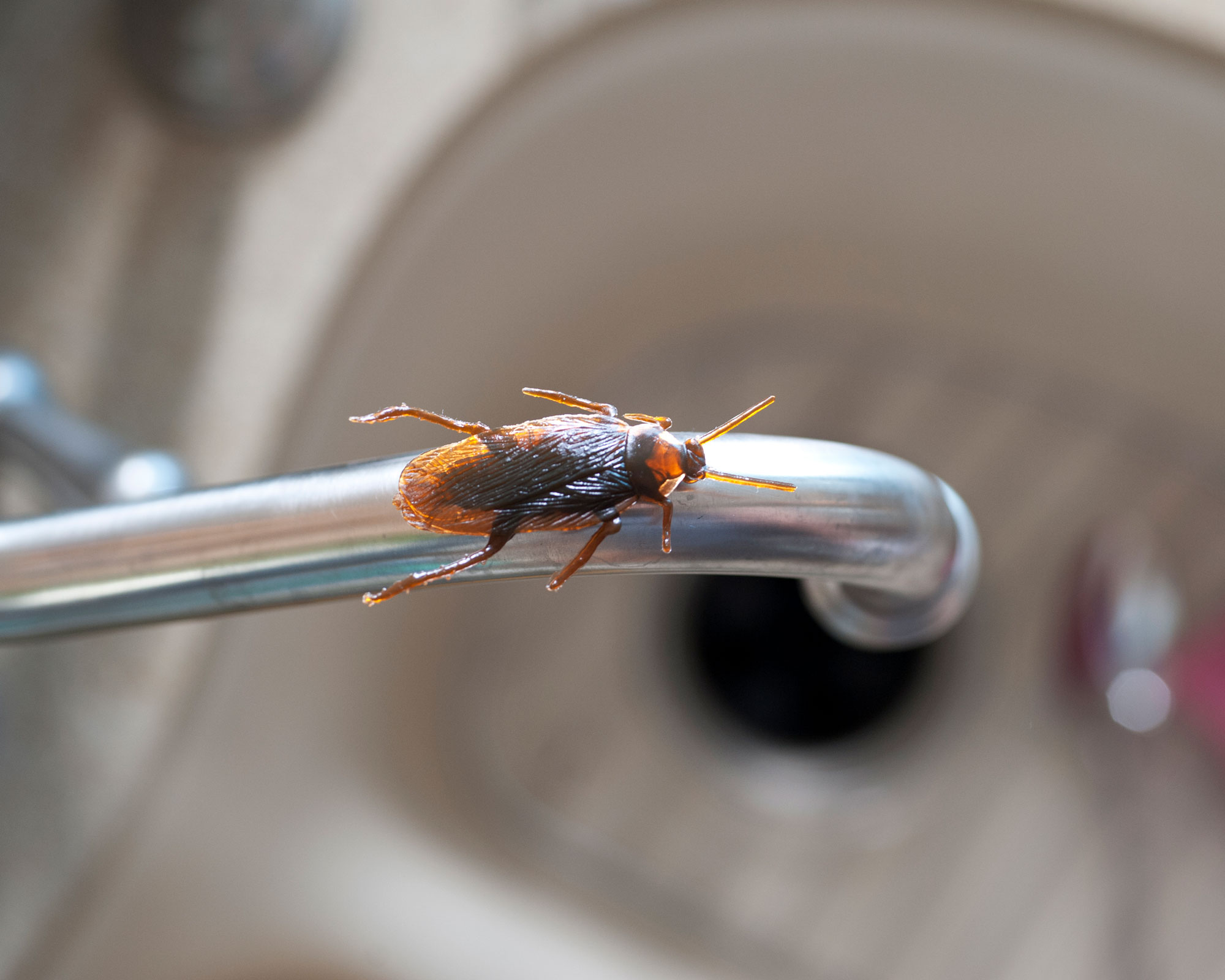
Both bugs pose significant, yet different, risks. Pictured is a cockroach.
Both cockroaches and bed bugs pose risks.
'While bed bugs are not known vectors of any human or animal diseases, their bites can be irritating and easily lead to infection,' advises Emma.
'Bed bugs will bite any exposed skin available to them, and if there are issues with feeding or disruptions, one bug may bite multiple times throughout the night. Bed bugs are also linked to many insect-related psychological illnesses, like delusional parasitosis and general paranoia.'
The main risk with cockroaches comes from their presence in unsanitary areas, where they pick up bacteria and contaminate new surfaces.
'Cockroaches spread bacteria like Salmonella, causing food poisoning,' warns Jim. They're also known to spread E. coli and even Cholera.' Therefore, if you notice or suspect their presence, it's vital that you gather your cleaning supplies and essential cleaning tools, and clean your house fast.
'Additionally, roaches have flaky wings and exoskeletons that shed as they molt,' adds Emma. 'This shedding, also known as cast skins, can become an airborne irritant and inflict asthma-like allergic reactions.' Using your best air purifier can help with this. We recommend the Shark Air Purifier available at Amazon.
Prevention and control

As Emma advises, the best way to prevent a roach infestation is to increase sanitation and decrease entry points around the home, to reduce the ways insects are entering your home.
'Most roach issues start with cockroaches wandering into homes and feeding on available food debris and moisture,' explains. 'Sealing unwanted entry points and keeping homes free of exposed food or food waste can help reduce the chance of a roach infestation.'
Your pantry is a particular hotspot for these resilient pests, so ensure you keep all food sealed at all times with Airtight Storage Canisters, available at Walmart, as this is a common thing attracting roaches to your clean house.
Additionally, 'Fix leaks promptly and keep the kitchen clean,' says Jim. And, for bedbugs, 'Clean thoroughly! The United States Environmental Protection Agency (EPA) recommends steam cleaning with steam temperatures of at least 130° Fahrenheit to thoroughly clean carpets, baseboards, bed frames, and other furniture.'
For bed bugs, always be vigilant and aware of items brought inside after travelling. 'Be aware that bed bugs can also be brought in on secondhand items like bedding, clothing, furniture, or art,' adds Emma. 'Always check items thoroughly before bringing them inside.
'If you do find bed bugs or suspect you may have them on your items, do your best to either dispose of infested items, wash infested items on high heat, or quarantine items away from the home while you call pest control.'
What to shop
All prices were correct at the time of publication.
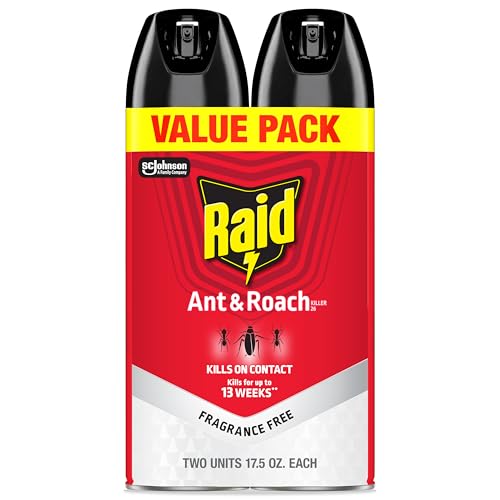
This roach killer kills on contact and continues working for up to 13 weeks, in an easy-to-use spray can with no lingering odors.
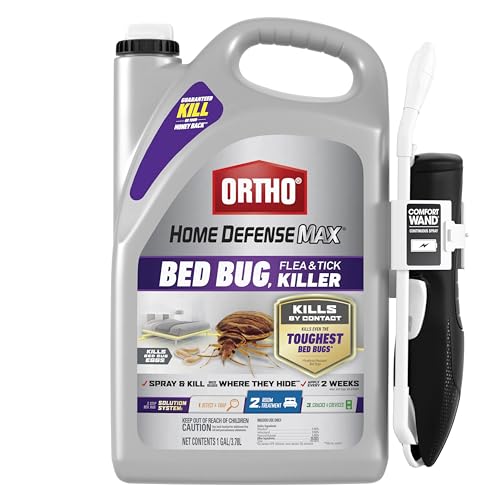
This effective insect spray features an included Comfort Wand, to target tight and hard-to-reach places where bed bugs hide, like under mattresses and under baseboards.
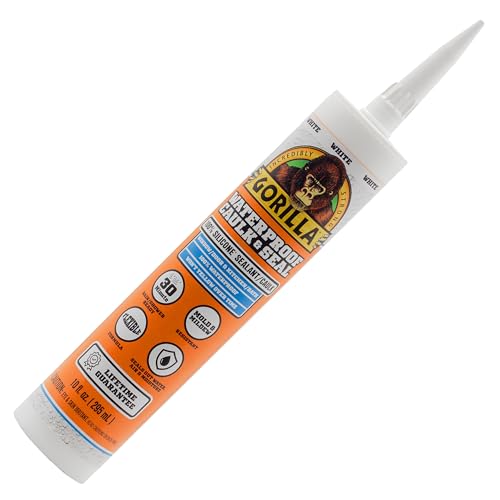
This caulk is both mold and mildew resistant, and won't crack, shrink or yellow when exposed to inclement weather.
FAQs
Are bed bugs easier to get rid of than roaches?
Neither infestation will be welcome in any household, but, in general, cockroaches are easier to control than bed bugs. This is because they're bigger, easier to spot, and will eat anything, making them susceptible to bait traps, such as the Combat Roach Killing Bait available at Amazon.
Meet our experts

Cornell Entomologist and president of JP McHale Pest Management Jim is known as a visionary in the pest management industry. He has redefined the role of "exterminator" and transformed the small "extermination" company started by his father James McHale, Sr., into a technology and science-driven pest management company servicing more than 6,000 residential and commercial customers throughout the New York region. He joined the company in 1988.

Emma is an entomologist who works with the leading pest control company, Mosquito Squad Plus, and has vast experience speaking to a range of pest identification, prevention and treatment topics.
Do you know the differences between hornets vs. wasps? Our pest pros explain everything you need to know about staying safe when dealing with both.
Sign up to the Homes & Gardens newsletter
Design expertise in your inbox – from inspiring decorating ideas and beautiful celebrity homes to practical gardening advice and shopping round-ups.

Ottilie joined Homes & Gardens last year, after finishing a Master's in Magazine Journalism at City, University of London. With previous contributions in Livingetc and Motorsport Magazine, she produces content for the Solved section on the website, focusing on clever tips and tricks to keep your home beautiful, organized and clean. She also has a Master's degree in English Literature and History of Art from the University of Edinburgh, where she developed a love for inspiring interiors and architecture.
You must confirm your public display name before commenting
Please logout and then login again, you will then be prompted to enter your display name.
-
 Bug bombs 101 – what are they, how to use them, and the must-know safety measures to keep in mind
Bug bombs 101 – what are they, how to use them, and the must-know safety measures to keep in mindI'm a pest control expert, and this is my ultimate bug bomb guide
-
 I've finally discovered exactly how to keep my container plants watered when I'm on vacation – and it takes less than five minutes
I've finally discovered exactly how to keep my container plants watered when I'm on vacation – and it takes less than five minutesYour plants will stay hydrated for days with the addition of these nifty self-watering tools
-
 Bug bombs 101 – what are they, how to use them, and the must-know safety measures to keep in mind
Bug bombs 101 – what are they, how to use them, and the must-know safety measures to keep in mindI'm a pest control expert, and this is my ultimate bug bomb guide
-
 Keep wasps away with this pesticide-free, non-toxic wasp deterrent that over 3,000 shoppers hail as 'nothing short of a miracle'
Keep wasps away with this pesticide-free, non-toxic wasp deterrent that over 3,000 shoppers hail as 'nothing short of a miracle'It’s so surprisingly simple
-
 Wave goodbye to pesky mosquitoes with the new $4 IKEA curtain – a chic alternative to the ugly bug nets of the past
Wave goodbye to pesky mosquitoes with the new $4 IKEA curtain – a chic alternative to the ugly bug nets of the pastYou can cut it without hemming and machine wash, too
-
 This $7 ALDI portable pest repellent fan is the perfect non-toxic way to keep flying bugs away this summer
This $7 ALDI portable pest repellent fan is the perfect non-toxic way to keep flying bugs away this summerEnjoy open windows and your yard this summer without mosquitoes and flying bugs annoying you
-
 Do portable bug repellent fans really work? Entomologists reveal how to boost effectiveness for a non-toxic 'personal bug-free zone'
Do portable bug repellent fans really work? Entomologists reveal how to boost effectiveness for a non-toxic 'personal bug-free zone'It's a smart solution for all-natural, non-toxic pest control for inside and out
-
 Anyone who sleeps with their windows open at night is urged to use this $13 device to keep cool without inviting 'an army of pests' inside
Anyone who sleeps with their windows open at night is urged to use this $13 device to keep cool without inviting 'an army of pests' insideOur pest pros recommend using it from dusk to dawn
-
 Cockroach vs. waterbug – how to spot the difference and why it matters for pest control success
Cockroach vs. waterbug – how to spot the difference and why it matters for pest control successIdentify which one you're dealing with before deploying any pest control
-
 How to get rid of cockroaches in the bedroom fast without having to move out of your sleep space
How to get rid of cockroaches in the bedroom fast without having to move out of your sleep spacePest control pros reveal what you need to do